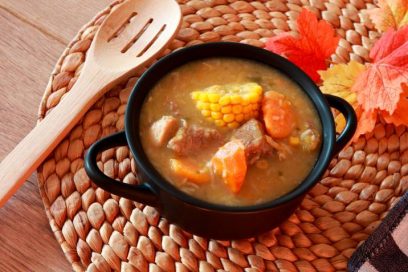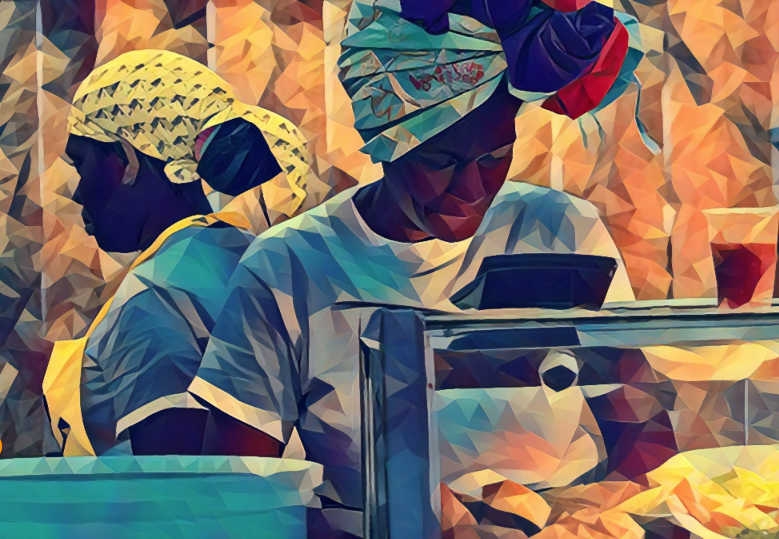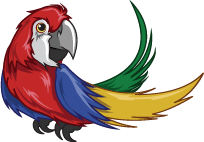La cocina del litoral Pacífico es una cocina criolla de resistencia, donde la relación con el entorno natural es importante y el conocimiento de los calendarios agroecológicos de plantas y animales es fundamental.
Sabores y saberes ancestrales.
El Litoral Pacífico colombiano, como parte del llamado Chocó biogeográfico, es una de las regiones más biodiversas del planeta y es el hogar de una numerosa población afrodescendiente, donde el uso de los recursos provenientes de la oferta natural es fundamental para la supervivencia y reproducción social y cultural de las comunidades, las cuales viven en su mayoría en territorios colectivos con amplias áreas de bosques naturales y humedales.
Los sabores y saberes relacionados con la alimentación y las cocinas tradicionales del litoral Pacífico colombiano son muestra de la adaptación de comunidades, especialmente afrodescendientes, a un territorio con una diversidad biológica muy amplia; estas cocinas del Pacífico colombiano, nacidas del encuentro entre las cocinas de origen amerindio, europeo y africano, expresan al mismo tiempo la fortuna de ese diálogo de saberes que dio paso a unas cocinas regionales con gran identidad, así como lo difícil de la diáspora africana y el arraigo en un nuevo territorio, diferente al de muchos pueblos al otro lado del Atlántico.
En esta región se encuentran dos importantes espacios en los cuales las cocinas se han recreado y reinventado, y se han hecho más dinámicas: los puertos de Buenaventura y Tumaco. La cocina de estos puertos es muestra de la profunda relación con el mar, esteros, manglares y ríos, selvas, bosques y áreas de cultivo, pero también expresan el intercambio con otras comunidades.
La cocina convoca de una manera particular en estas comunidades, pues es en torno al fogón la música, los relatos, las canciones, los bailes y las bromas aparecen de manera espontánea. La sazón de los alimentos se complementa con el sabor de cocineras y cocineros quienes con sus manos día a día rememoran técnicas que se han incorporado en la memoria desde la niñez, y al tiempo reinventan nuevas posibilidades con la diversidad de productos que proporciona la región, combinando sabores con alegría y aderezando cada plato con sus cantos.
Una tradición que abarca toda la vida familiar y comunitaria
La cocina tradicional representa un punto central de las relaciones que mantiene vivo el tejido social de las comunidades. En el Pacífico la preparación de alimentos está muy ligada a las fiestas y celebraciones, a los ritmos del día, a la música y a otras manifestaciones culturales. La música de tambores y el canto jugaron un papel fundamental en las reuniones y eventos de cocina. “Cuando se cocina y se canta las cosas saben mejor”
“La cocina tradicional del Pacífico es una herencia de nuestros antepasados, que va pasando de edades a edades, de familias a familias, de tradición a tradición y nosotros la vamos a conservar.”
– Mamá Julia. Sabedora tradicional
La región del sur del litoral Pacífico colombiano hace parte del corredor de bosque húmedo tropical que bordea el océano Pacífico, al occidente de los Andes. Es un territorio húmedo y selvático, bañado por dos grandes ríos: al norte el San Juan, que sirve de límite a la región y a los departamentos de Chocó y el Valle del Cauca y, al sur, el Patía. Numerosos ríos descienden de los Andes, entre ellos los ríos Mira y Mataje, que sirven de límite sur a la región y de límite político a Colombia y Ecuador.
El río San Juan marca una frontera culinaria entre el sur y el norte de la región del Pacífico. Al norte, en el Chocó, cobra una especial importancia la pesca fluvial, la carne de monte, el consumo de carne de cerdo, y se hace presente un ingrediente, que no se produce en la región (se lleva del Caribe), pero que ha dejado una impronta en la cocina: el queso costeño . Al sur se depende, en gran parte, de la pesca marítima y la recolección de conchas y cangrejos, y casi todo se sazona con leche de coco.
En toda la región del Pacífico los elementos comunes en la cocina son: el uso del refrito con hierbas de azotea; el consumo de pescado; el importante papel que cumplen en la cocina el plátano y el maíz, indispensables en innumerables versiones de sudaos y amasijos; y el “tapao”, un plato de fácil preparación con banano verde o plátano y, por lo general, de pescado.
La cocina del Litoral Pacífico Colombiano tiene una clara derivación de los encuentros culturales de pueblos de origen africano, pueblos indígenas y los colonizadores hispánicos. En las cocinas actuales de Tumaco puede verse la influencia de estas matrices culturales del pasado, con la presencia, además, de elementos culinarios de la sierra nariñense, como también de alguna influencia de la cocina ecuatoriana, peruana y europea. En las cocinas de Buenaventura hay influencias de la cocina vallecaucana, del interior del Chocó y del sur del Pacífico, entre otras.
Algunos platos típicos del Litoral Pacifico Colombiano
1- La sopa de cangrejo
El cangrejo es una de las especies más presentes en las costas y en las mesas del Litoral Pacífico colombiano. Su disponibilidad lo convierte en un elemento propicio para formar parte de muy variados platos: desde sopas hasta parrilladas de mariscos o ensaladas. En este caso, la sopa de cangrejo es uno de los aperitivos o entrantes más comunes en la cocina de la región.
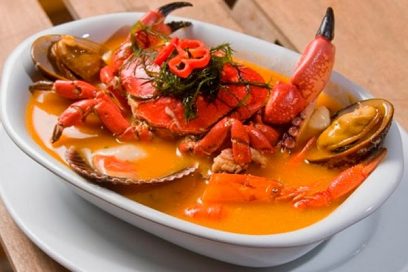
2- El bacalao de pescado seco-liso
Este es uno de los platos más característicos de la cocina de la región. El bacalao seco-liso es famoso en todo el país y evoca inmediatamente al Pacífico. Se trata de un plato en que el bacalao es desmenuzado una vez cocino, retiradas piel y espinas. Previamente, se prepara un sofrito de cebolla, tomate, albahaca, limón, vinagre, aceite y achiote.
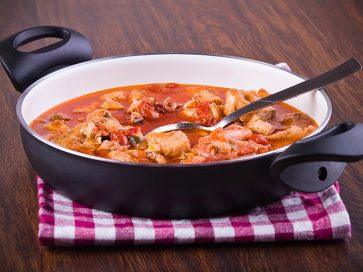
3- Los aborrajados de pescado
Son una versión colombiana del pescado rebozado. En este caso, la particularidad viene dada por el tipo de pescado utilizado: la mojarra. Este pez es típico del Caribe y Sudamérica, y se pesca en aguas del Pacífico colombiano. Los filetes se rebozan en harina trigo y huevo batido, se salan al gusto y se fríen en aceite hasta conseguir el punto de fritura deseado.
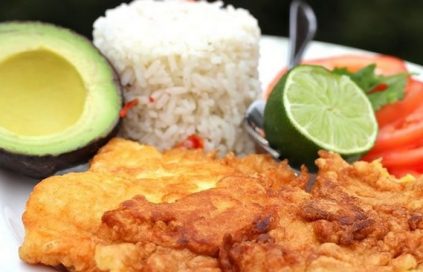
4- Empanadas de jaiba
Las empanadas de jaiba son un plato típico del departamento de Chocó. Se trata de empanadas de masa de maíz agria, hechas sobre hojas de plátano engrasadas y rellenas de carne de jaiba desmenuzada. La jaiba o cangrejo azul es una especie de crustáceo encontrado en la desembocadura de los ríos. Se caracteriza por poseer un carapacho aplanado y patas y tenazas de color azul. El relleno de las empanadas de jaiba suele ser acompañado por aliños, refrito y papa.

5- Tapao de pescado
Este es el plato insigne de la región Pacífica colombiana y es proveniente de Guapi, en el departamento del Cauca. Se trata de un caldo de pescado que contiene papa, plátano verde, yuca, tomate, cebolla, pimentón, comino, achiote y ajo. El pescado debe ser en ruedas y de carne blanca. Se cocina en una cazuela cubierta de hojas de plátano y se sirve con arroz con coco.
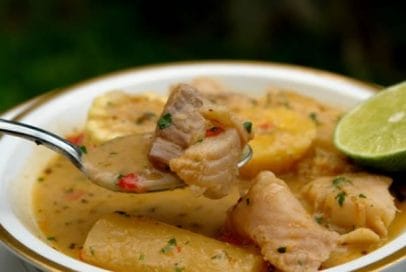
6- Sancocho de carne serrana
También conocido como “quebrao”, es una sopa compuesta por carne serrana. El caldo contiene plátanos verdes, yucas, papas, cebollas, tomates y menta poleo. Es originario de Tumaco, en el departamento de Nariño, y también del departamento del Cauca. Se desala la carne hirviéndola junto con las cáscaras del plátano. Luego se hierve junto con los demás ingredientes y se acompaña de rodajas de aguacate.
